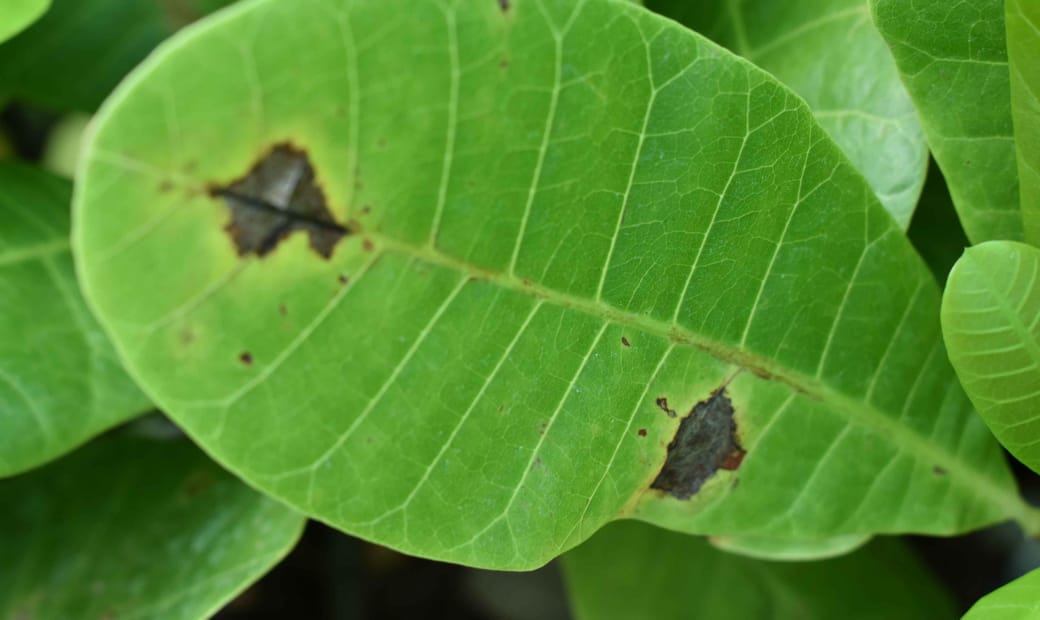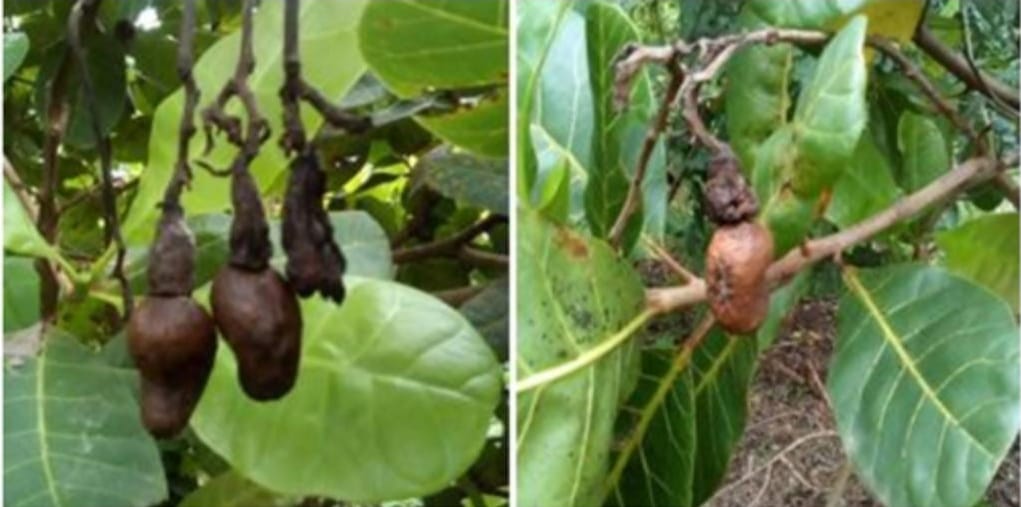Cashewnut Plant
Cashew trees thrive in well-draining soil and full sun exposure. Water consistently, especially during dry periods. Prune to shape the tree and remove dead or diseased branches. Mulching helps retain moisture. Fertilize during the growing season for optimal nut production.

Habit
Tree
Growth
Moderate
Soil
Well Drained, Sandy-loam
Height
10-15 m
Shade
Full Sun
Moisture
Moist
Edible
Yes [Nut]
Medicinal
Yes
Origin
Brazil, South America
Climatic Condition
Tropical, Subtropical
Temperature (°)
25 to 35°C
Humidity (%)
60-80%
Potting media
Organic compost, peat
Fertilizers
NPK 8:4:8, needs high potassium & phosphorus
Watering
Moderate, avoid waterlogging
Plant Weight
5-8 kg per nut cluster
Flowering Time
Spring to early summer
Soil Ph level
5.0 - 6.5
Water Ph level
5.0 - 6.5
Soil EC
1-2 dS/m
Yield Per Plant
7-15 kg nuts per tree
NPK ratio
10:10:10
life Span
25-30 years
Health Benefits
Rich in healthy fats, protein, good for heart health
Suggested Grow Media or Potting Mix ?
50% sandy soil, 30% compost, 20% perlite
Suggested Fertigation/Fertilizers
Fertilize every 6 weeks with a balanced, slow-release fertilizer.
Common Diseases and Remedies
Anthracnose.
Initially water soaked spots and become orange-brown to light-reddish with age and sporulation of fungus . Severe cases leaves and fruitlets become totally blighted and drop.
Prune infected trees in winter, Destroy diseases twigs and branches after pruning.
HEALTH BENEFITS
· Heart Health: Rich in monounsaturated fats that help lower bad cholesterol.
· Bone Strength: Contains magnesium and phosphorus, essential for strong bones.
· Antioxidant Properties: High in vitamin E and selenium, reducing oxidative stress.
· Supports Immunity: Zinc content helps strengthen the immune system.
· Weight Management: Healthy fats promote satiety and reduce overeating.
What Is An Cashewnut Tree?
Cashew plants produce cashew nuts. Cashew nuts are actually the seeds that develop at the end of the cashew apple, which is a fleshy fruit. Cashew nuts are surrounded by a hard shell and cashew apples are edible and are sometimes used to make drinks and preserves. Cashew nuts are widely consumed around the world and are known for their rich flavor and nutritional value. In addition, cashew trees are cultivated for their wood and are used for a variety of purposes, including furniture and construction.
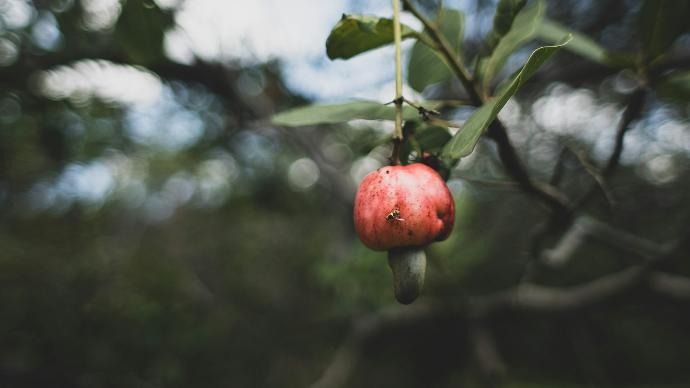
What Are The Different Types Of Cashewnut Plants?
1. White Cashew Nuts
This type of cashew nut has a bright, pale color. White cashews are often preferred for their mild flavor and are often used in cooking, baking, and snacking.
2.Red Cashew
Red Cashew: Red cashews are a darker reddish-brown color. Compared to white cashew nuts, they have a stronger and richer flavor. Red cashew nuts are also used for various culinary purposes and are popular due to their special properties.
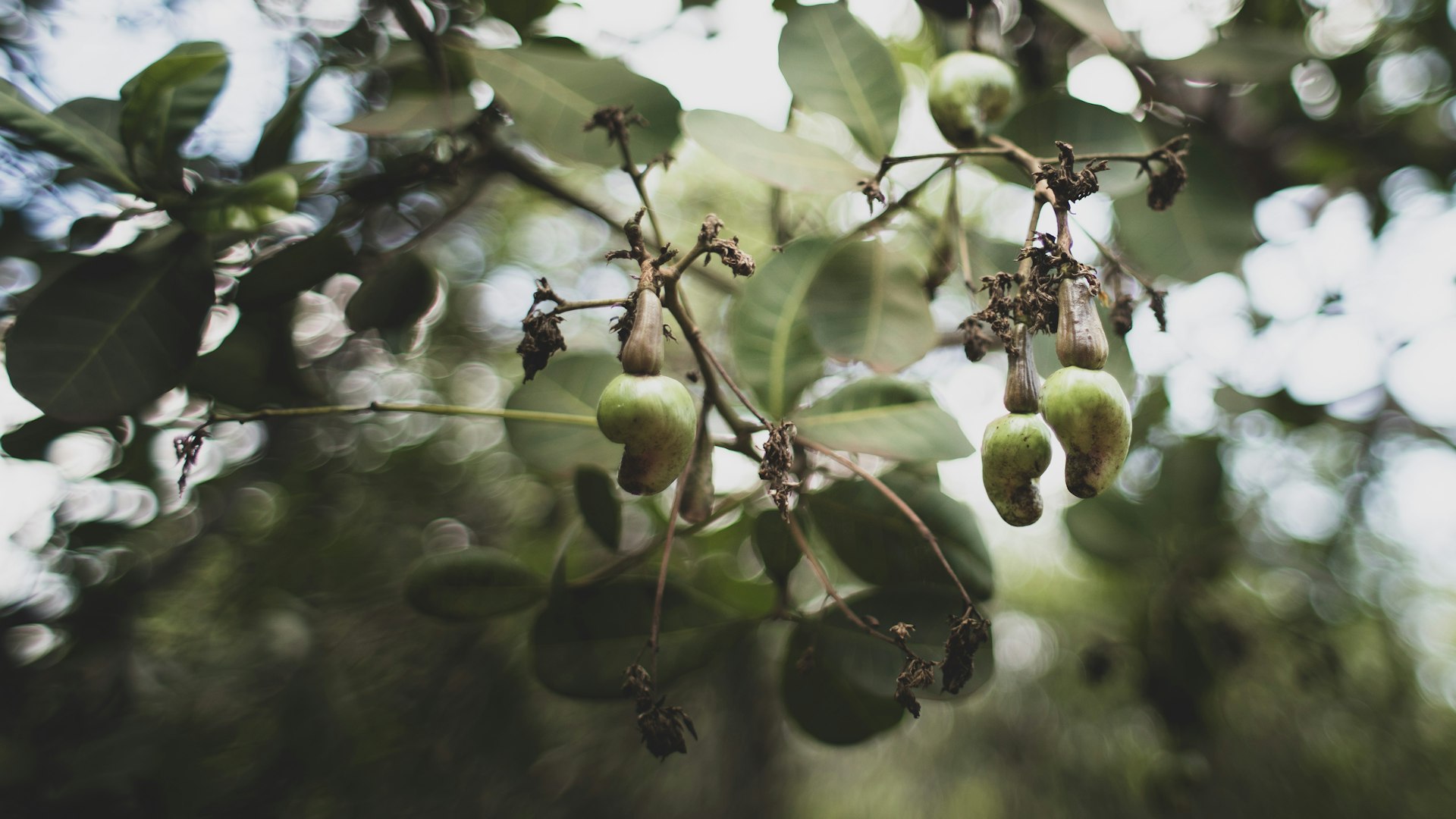
How to care for Cashewnut Plants ?
1. Location
Cashew trees grow in warm, humid climates. For optimal growth, it prefers temperatures between 25°C and 30°C. Areas with a pronounced dry season followed by a rainy season are particularly suitable for growing cashew nuts. However, once established, it can tolerate short periods of dryness.
2. Sunlight
Cashew nuts grow in areas that receive plenty of sunlight. Full sun to partial shade is required for optimal growth and fruit production. Tropical regions where cashews are commonly grown usually receive plenty of sunlight all year round. To keep your cashew tree healthy, give it at least 6 to 8 hours of direct sunlight per day. However, while it can tolerate some shade, especially during the hottest parts of the day, extended shade can affect fruit production and overall productivity.
3. Soil
Cashews prefer well-drained sandy or loamy soils with a pH of 6.0 to 7.0. Adaptable to a variety of soil types as long as the soil is well-drained and not soggy. Additionally, cashew trees tolerate reduced soil fertility and can grow in soils with low nutrient levels. However, for optimal growth and yield, it is beneficial to enrich the soil with organic matter, such as compost or well-rotted manure, before planting. This helps improve soil structure, moisture retention, and nutrient availability for cashews. Avoid excessively clayey or compacted soils as this can hinder root development and drainage, negatively impacting the health and productivity of your cashew tree.
4.Hydration
Establishment Phase: Newly planted cashew trees need frequent watering to establish their root system. Water deeply and thoroughly immediately after planting and continue to water regularly until the tree is established, usually within a year.
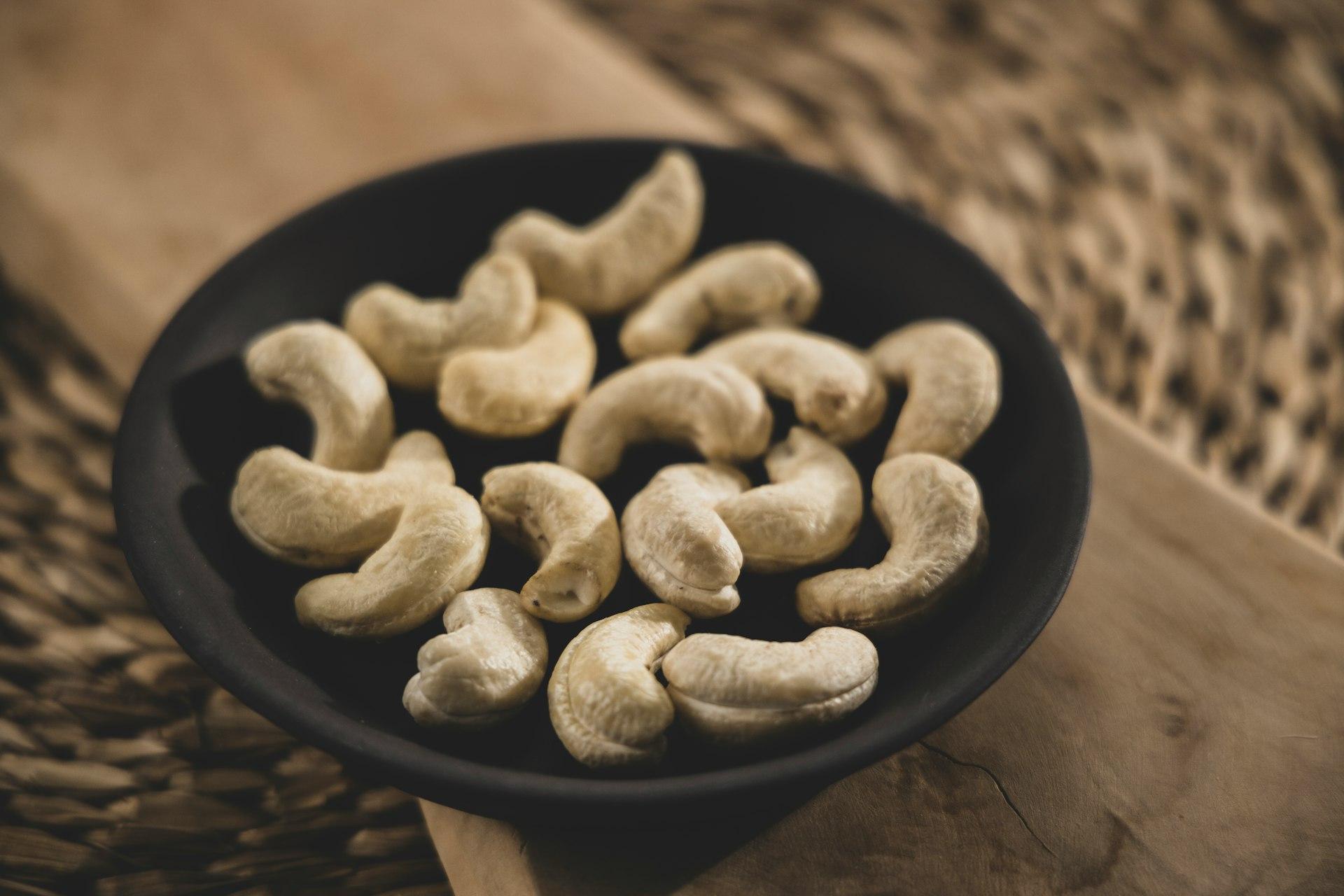
5.Nutrients
Cashew trees benefit from regular fertilization to nourish the soil and support vigorous growth. Feed fruit trees with a balanced fertilizer in early spring, just before the growing season begins. Incorporate organic matter such as compost, well-rotted manure, and composted leaves into the soil around your cashew tree to improve the soil's fertility, structure, and water-holding capacity. Organic additives provide essential nutrients and beneficial microorganisms that promote root development and overall plant health.
What are the Benefits of Cashewnut Plants ?
Cashew nuts are a good source of protein, healthy fats, fiber, and essential minerals such as copper, magnesium, and phosphorous Healthy unsaturated fats in cashews, such as oleic acid and palmitoleic acid, lower LDL (bad) cholesterol levels and increase HDL (good) cholesterol levels, which can improve heart health. promotes it.
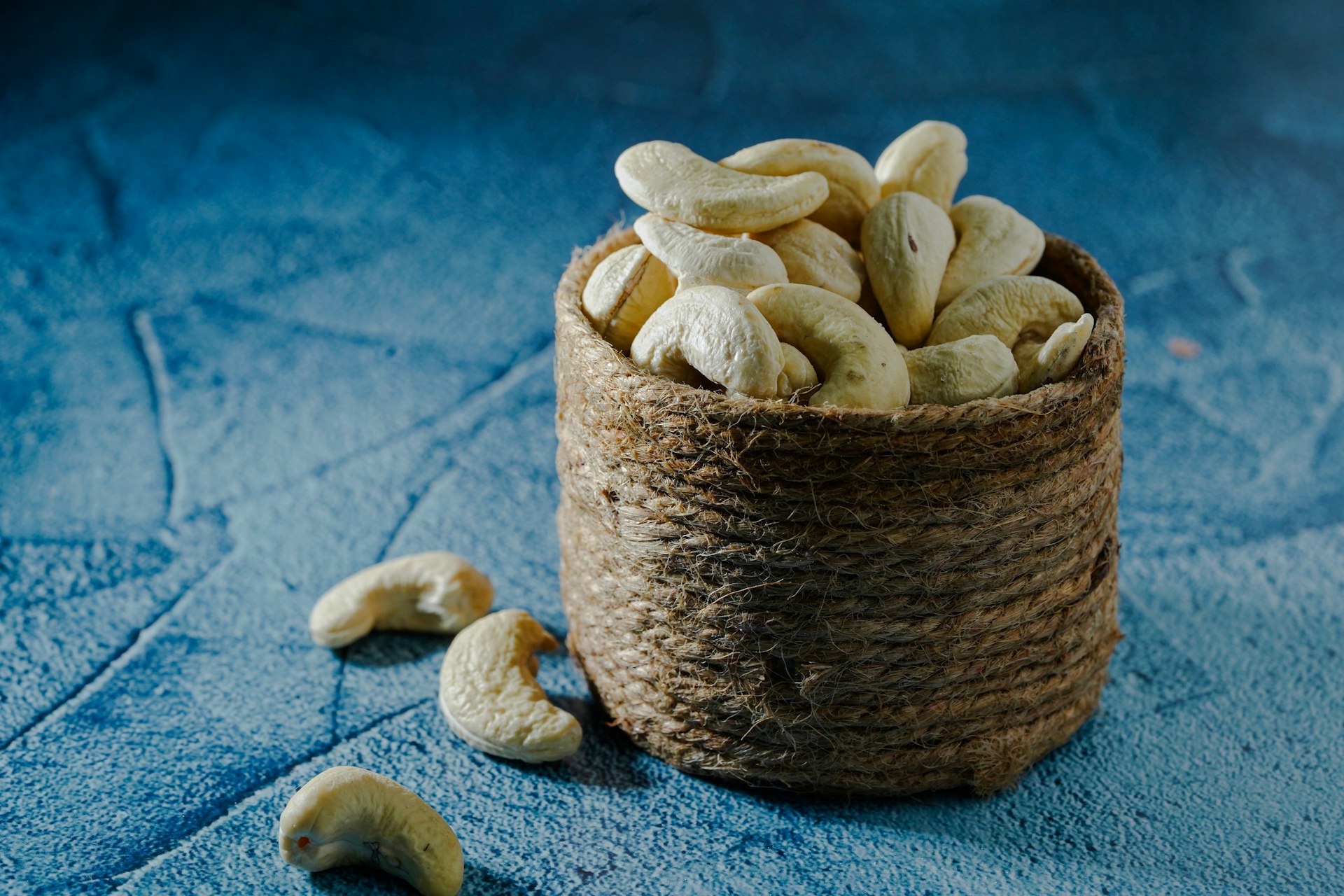
FAQs About Growing Cashenut plant
1. 1.How long does it take for a cashew tree to bear fruit?
Cashew trees typically start producing fruit when they are around 3 to 5 years old, although it can sometimes take up to 8 years for them to bear their first significant crop. Full production is usually reached when the trees are 8 to 10 years old.
2.What is the best time of year to plant cashew trees?
Cashew trees are best planted at the beginning of the rainy season in tropical and subtropical regions. This allows the trees to establish their root systems and take advantage of the moisture in the soil. In most regions, this corresponds to the spring or early summer months.
3.How far apart should cashew trees be planted?
Cashew trees should be planted at a distance of about 8 to 10 meters (26 to 33 feet) apart from each other to allow for adequate sunlight exposure and airflow. This spacing helps prevent competition for resources and allows the trees to reach their full potential.
4.Do cashew trees require pruning?
Cashew trees benefit from occasional pruning to remove dead or diseased branches, improve airflow, and shape the tree. Pruning should be done during the dry season to minimize the risk of disease transmission and should be carried out with sharp, sterile tools.
5.How often should cashew trees be watered?
Cashew trees require regular watering, especially during the dry season or periods of drought. However, they are somewhat drought-tolerant once established and can survive with less water. It's essential to provide consistent moisture, especially during flowering and fruiting, to ensure optimal growth and fruit production
